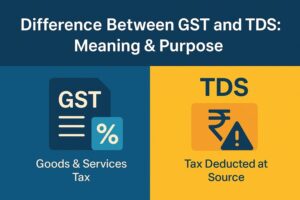Why Is GST a Game Changer?
- 14 Feb 25
- 12 mins

Why Is GST a Game Changer?
- GST and Tax Buoyancy
- How GST Impacted States’ Revenue Collection?
- How GST Impacted Sovereignty?
- How GST Eliminated Cascading Taxes?
- Higher Threshold for Registration
- Easy-to-Use Online Portal
- Reduction in the Number of Compliances
- Improved Regulations for E-Commerce Businesses
- Benefits of GST for MSMEs
- Benefits of GST for Consumers
- Benefits of GST for the Logistics Sector
- Achievements of GST Till Now
- Conclusion
Key Takeaways
- Higher Tax Buoyancy—GST improved revenue growth with a buoyancy of 1.25.
- Stronger State Revenues—SGST collections outpaced pre-GST trends.
- No Tax Cascading—Eliminated tax-on-tax, reducing costs.
- MSME & Consumer Gains—Higher exemptions, easier compliance, and lower taxes.
- Logistics & Investment Boost—Faster transport, fewer checkpoints, and increased investments.
GST is one of the biggest tax reforms in the Indian economy. It has simplified taxation in India by applying a single tax on the supply chain. While the idea of GST has a long history, its practical implementation took a long time. In 2016, the Constitutional Amendment Act was passed, and on 1 July 2017, it finally came into force.
But why is GST a game-changer? From states' revenue collection to the benefits for the MSMEs, we will cover all the key aspects of GST's boons in this comprehensive blog.
GST and Tax Buoyancy
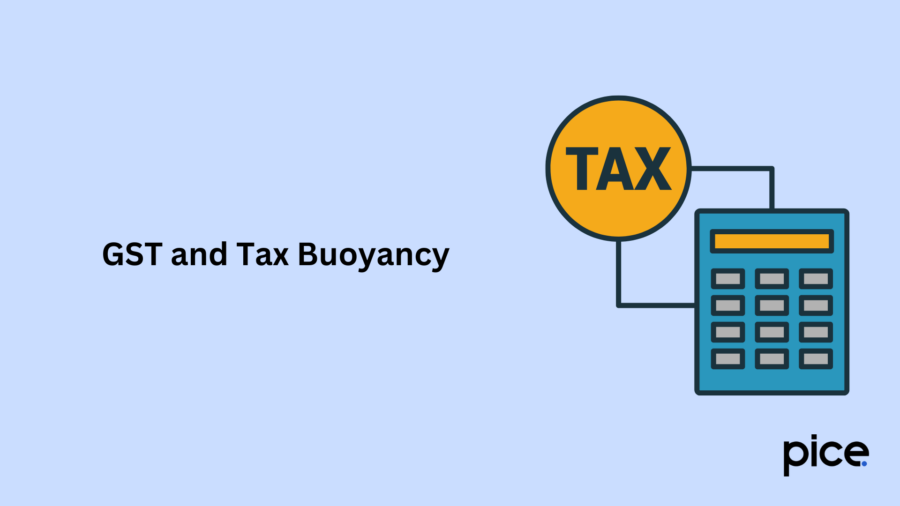
The performance of a tax system is judged by tax buoyancy. It shows the ratio of growth in tax revenue to the annual growth rate of GDP. A buoyancy of 1 means that the tax revenues are rising at the same rate as the GDP while a value of over 1 means that tax revenues are increasing at a higher rate than the GDP.
As per analysis, buoyancy over 5 years minimises the impact of short-term fluctuations. From 2018-19 to 2022-23, the average growth rate of gross GST revenues was 12.3%, compared to an average nominal GDP growth rate of 9.8%. This results in a tax buoyancy of 1.25, which is excellent for any tax system, particularly for a relatively new one.
Over the initial 20 months of its implementation, important rate cuts were provided to impart stability to the new system. Moreover, the COVID-19 pandemic created several macroeconomic and social problems. Yet, the tax buoyancy is an impressive 1.25.
It can be compared with the 5 years from 2012 to 2017. During this time, the buoyancy of the taxes subsumed in the GST system was 0.9988. Over the preceding 2 years of their analysis, GST collections were growing faster than prices and GDP. It proves that GST has performed well and shown stability.
How GST Impacted States’ Revenue Collection?
When GST was introduced, there were apprehensions about how it might impact the tax collection by the states. That’s why the Centre agreed that it would compensate states if they suffer any losses less than 14% year-on-year growth compared to revenues from subsumed taxes. The base year was to be 2015-16.
The figure of 14% did not have an economic or empirical origin. It was simply a number that both the Centre and States agreed upon to start the GST.
In the 4 years from 2012 to 2016, States’ revenue from taxes subsumed in GST had a growth rate of 8.3%. During the same period, the GDP growth rate was 11.5%. This amounted to a tax buoyancy of 0.72, which is significantly less than 1. Therefore, the States’ revenue from taxes subsumed under GST was growing much slower than the GDP before GST was introduced.
This can be compared with States’ SGST revenues, including compensation, between 2018 and 2023. At this time, the tax buoyancy was 1.22, amounting to total revenues of ₹37.7 trillion. In this figure, post-settlement revenues stood at over ₹29.2 trillion, and compensation at Rs. 8.5 trillion. Thus, even if compensation is not considered, SGST tax buoyancy was 1.15. It was clearly an improvement over the pre-GST buoyancy.
If GST had not been implemented, the tax buoyancy of 0.72 along with the GDP growth rate of 9.8% over the post-GST 5-year period would have led to 7.1% growth in State’s revenue. It is almost 50% less than the 14% the Centre and the States agreed upon. It would have resulted in aggregate revenues of ₹27.9 trillion for the States.
How GST Impacted Sovereignty?
GST did not lead to an erosion of the sovereignty of either the Centre or the States. Rather, GST saw a pooling of sovereignty regarding indirect taxes.
Cooperative federalism is one of the top accomplishments of GST. This is because most decisions are arrived at by the consensus of the GST Council members. Both the Centre and the States are members of the GST Council.
How GST Eliminated Cascading Taxes?
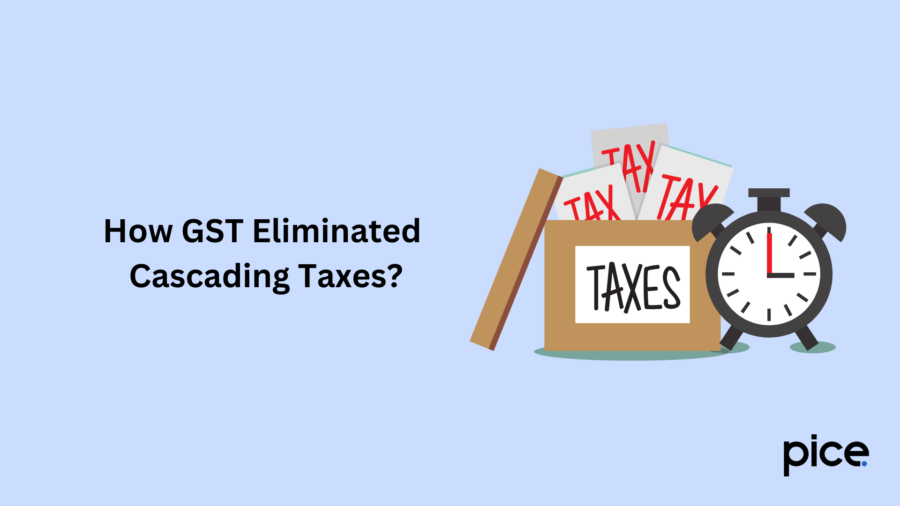
GST is an all-encompassing indirect tax aimed at consolidating various forms of indirect taxation into a single framework. A key benefit of this system is the eradication of tax cascading.
Tax cascading can be understood as a situation where taxes are levied on other taxes. We will illustrate this with an example.
Suppose a professional offering a service for ₹ 60,000 is charged a service tax of 15%, then the tax amount is ₹9,000. Further, let us say he bought office items for ₹20,000 and was charged a VAT of 5%. Then the VAT to be paid is ₹1,000.
Thus, the total tax charged is ₹10,000. This would be the case before GST came into existence.
However, under GST, the tax on the equipment will be reduced from the overall tax to be paid. The service offered will attract a tax of 18%, amounting to ₹10,800. After the tax of ₹1,000 for the equipment is reduced, the net tax to be paid is ₹9,800. Thus, the total tax to be paid has been reduced by ₹200. The above example illustrates how GST has simplified taxation across the supply chain. It explains why is GST a game-changer.
Higher Threshold for Registration
In the previous VAT framework, in most states, businesses generating over ₹5 lakh in turnover were required to pay VAT. It's important to highlight that this threshold was not uniform across all states. Additionally, service providers with turnover below ₹10 lakh were not subject to service tax.
With the implementation of the GST system, this exemption limit has been raised to ₹20 lakh, allowing a significant number of small traders and service providers to be free from these tax obligations.
Easy-to-Use Online Portal
The GST system is fully online, from GST registration to filing returns. This makes it remarkably straightforward. It has been particularly helpful for new businesses, eliminating the need to navigate multiple registrations for various taxes like VAT, excise and service tax.
Reduction in the Number of Compliances
Before GST, businesses had to do filing of returns for VAT and service tax separately, creating a lot of paperwork. Now, under GST, the filing process is much simpler. The number of required returns has significantly decreased.
While there are about 11 different GST returns, most businesses only need to file 4 basic ones. GSTR-1 lists all sales invoices and related documents for a given period. Then there are GSTR-2A and GSTR-2B which give you information about available input tax credits.
Finally, GSTR-3B provides a summary of sales, input tax credits, any refunds, and non-GST supplies. This return is used to report taxes owed, input tax credits claimed and the taxes paid.
Improved Regulations for E-Commerce Businesses
Before GST, e-commerce operators were subject to multiple regulations. Moreover, VAT laws differed across the states. It created confusion and further complicated compliance processes. GST streamlined this by creating uniform rules for e-commerce. It eliminated the complexities that previously existed for interstate commerce of goods sold online.
Benefits of GST for MSMEs
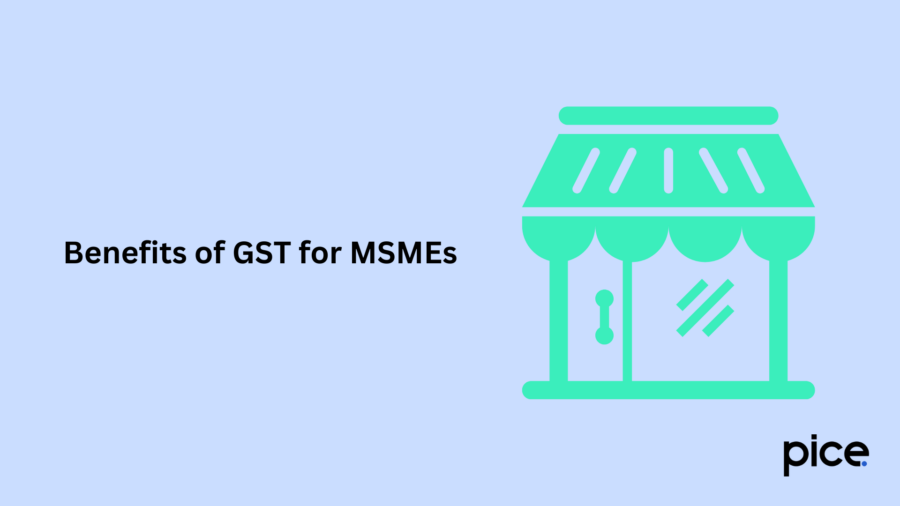
As per a PIB report posted in July 2024, GST has provided the following advantages to MSMEs:
Improved VAT Exemption and Composition Scheme Thresholds
Earlier, the thresholds for VAT exemption and the composition scheme were quite low. However, the introduction of GST brought significant changes:
- In the beginning, the GST threshold was set at ₹20 lakh, which was later raised to ₹40 lakh for goods.
- With the introduction of GST, a composition scheme was made available. It enabled small enterprises to pay a fixed percentage on their turnover while minimizing paperwork requirements.
Eased Compliance
The annual composition limit is set at ₹1.5 crore for goods and ₹50 lakh for services. It has greatly simplified compliance processes for smaller businesses.
Access to Finance
GST has created new opportunities for MSMEs for financing. The Trade Receivables e-Discounting System (TReDS) lets entrepreneurs get credit based on expected payments from recognized corporations and Central Public Sector Enterprises (CPSEs). When PIB prepared the report, around 500 companies and 170 CPSEs were registered with TReDS, providing substantial benefits to thousands of MSMEs.
Reduced Compliance Burden
The compliance demands on MSMEs have been notably minimised. It is because MSMEs with an annual turnover of up to ₹5 crore can now opt for quarterly return filing.
Benefits of GST for Consumers
As per the PIB report, GST is a consumer-friendly reform. It places the needs of consumers at its core.
Reduced Average Tax Rates
With time, the average GST rates have decreased. The increase in tax base and increased compliance made this possible. The number of taxpayers increased from 60 lakh to 1.2 crore.
Lower Tax Rates on Essentials
The government has consistently lowered tax rates on essential items. It has made them more affordable for consumers. As a result, consumers are now spending less on essential goods such as cereals, sugar, sweets, edible oils and snacks.
Savings on Household Expenses
A study by the Finance Ministry indicates that consumers saved at least 4% on their monthly household expenses since the introduction of GST.
Benefits of GST for the Logistics Sector
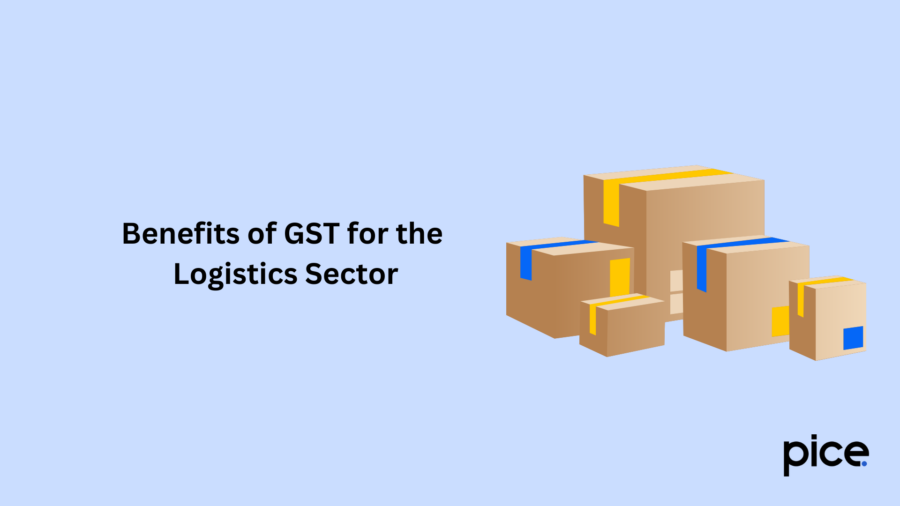
As per the PIB report, GST has delivered significant benefits to the logistics sector.
Smoothened the Movement of Goods
Here’s how GST has streamlined the movement of goods:
- Elimination of Long Queues: GST has significantly reduced the queues for trucks and freight vehicles at toll booths. It enables smoother transportation of goods between states.
- Removal of Corruption-Prone Checkpoints: GST has eliminated corruption-prone checkpoints (nakas) that hindered and delayed the movement of goods.
Improved Transport Efficiency
Here’s how GST's economic reform has improved transport efficiency:
- Reduction in Transport Time: Research indicates that transport times have improved by over 33% since the introduction of GST.
- Fuel Savings: People have experienced substantial savings on fuel costs, while major roadways have become less congested.
Optimised Warehousing
Before GST, businesses were compelled to have warehouses in every state due to varying tax rates. The new tax structure has streamlined operations, resulting in a more efficient logistics network.
Increased Investment Opportunities
GST has attracted considerable investment into the logistics sector. In the initial two years following GST's rollout, international investors and pension funds poured $1.5 billion into India's warehousing industry.
Demand for Enhanced Transport Solutions
With GST in place, a rise in demand for high-capacity trucks is anticipated. It will further enhance logistics performance.
Advanced Monitoring Systems
The E-way bill system introduced with GST automates the capture of transport data. It allows information to be accessed even through smartphones.
Additionally, the E-way bill system proved essential for tracking essential commodities and medical supplies during the COVID-19 lockdowns.
Achievements of GST Till Now
Since its introduction, the Goods and Services Tax (GST) in India has shown significant advancements and efficiency in generating revenue. During the fiscal year 2020-21, the total revenue collected amounted to ₹11.37 lakh crore, averaging about ₹0.95 lakh crores per month. This figure experienced a notable rise in subsequent years, reaching ₹14.83 lakh crores in 2021-22, with a monthly average of ₹1.24 lakh crores.
The positive trajectory continued into 2022-23, where total collections soared to ₹18.08 lakh crores, averaging ₹1.51 lakh crores monthly. In the fiscal year 2023-24, GST collections have further escalated to ₹20.18 lakh crores, with an impressive average of ₹1.68 lakh crores each month. These achievements highlight the effective implementation of GST.
Conclusion
GST has replaced a plethora of taxes with a single tax. Thus, the complicated and fragmented nature of taxation has been highly simplified. It has furthered the cause of "one nation, one tax". As India is the world's 5th largest economy in nominal GDP terms, it needs to have an easy and accessible system of taxation.
In the words of India's Prime Minister, GST stands for Good and Simple Tax. There are multiple reasons why is GST a game-changer. At its root, the success of GST is a testimony to the strength of India's cooperative federalism.
💡If you want to streamline your payment and make GST payments via credit card, consider using the PICE App. Explore the PICE App today and take your business to new heights.
 By
By 















